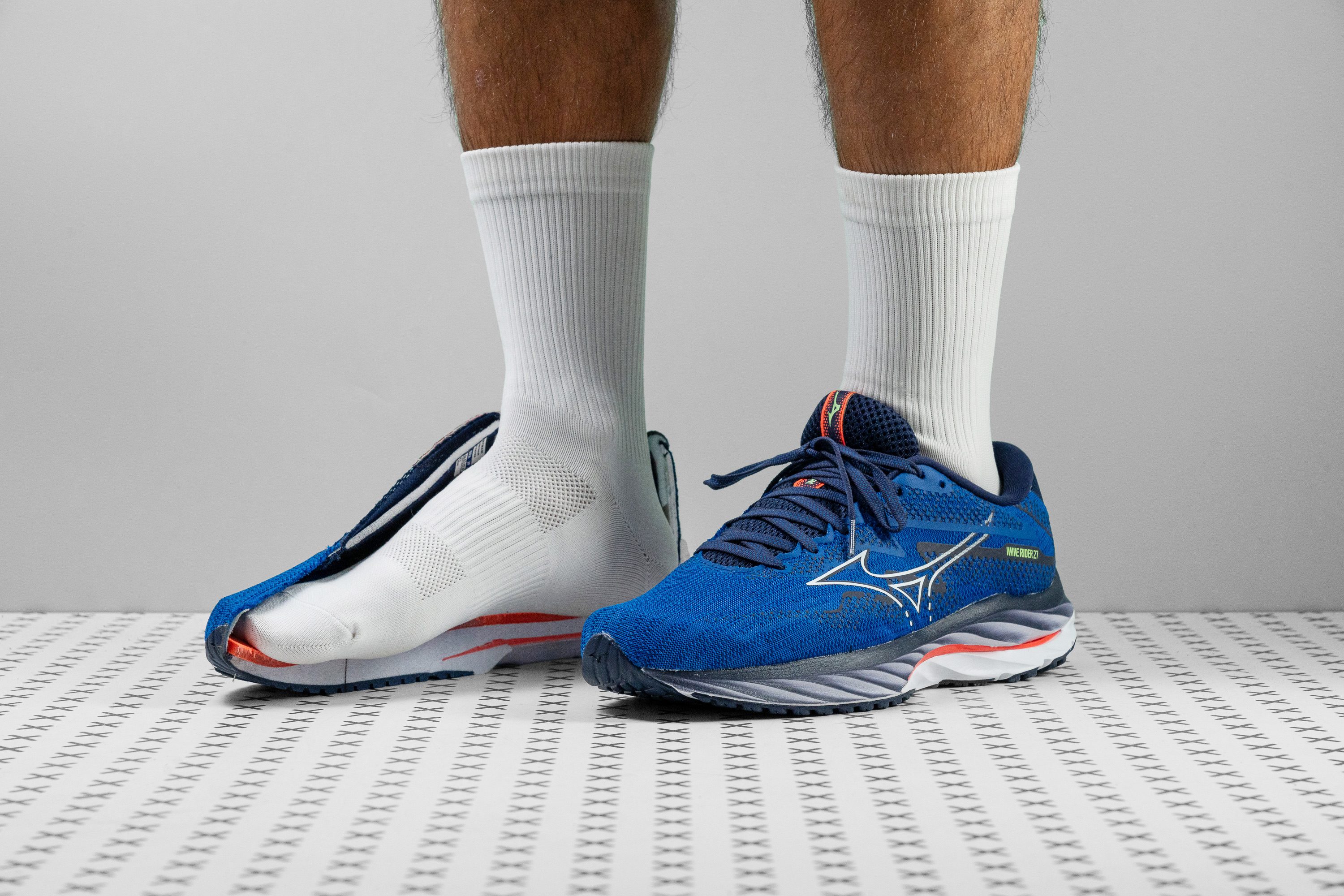Our verdict
- Top pick in best Mizuno running shoes (2024)
Pros
- Exceptionally reliable
- Ideal for heel strikers
- Plush cushioning for extended runs
- Highly durable outsole
- Reasonably priced at $140
- Performs well in all weather conditions
- Versatile across a range of speeds
- Versatile across a range of speeds
Cons
- A bit on the heavier side
- 13.2-mm drop may be a drawback for forefoot strikers
- Lacks bounce
Audience verdict
- Top 10% in road running shoes
- Top 20% in Mizuno running shoes
Comparison
The most similar running shoes compared
+ + Add a shoe | |||||
|---|---|---|---|---|---|
| Audience score | 91 Superb! | 86 Good! | 89 Great! | 86 Good! | |
| Price | £140 | £140 | £120 | £80 | |
| Pace | Daily running | Daily running | Daily running | Daily running | |
| Shock absorption | High | High | High | Moderate | |
| Energy return | Low | Low | Low | Low | |
| Traction | Moderate | High | Moderate | High | |
| Arch support | Neutral | Neutral | Neutral | Neutral | |
| Weight lab Weight brand | 9.8 oz / 279g 9.9 oz / 280g | 9.1 oz / 258g 9.3 oz / 265g | 9.7 oz / 274g 9.5 oz / 270g | 9.5 oz / 268g 9.2 oz / 260g | |
| Drop lab Drop brand | 13.2 mm 12.0 mm | 8.3 mm 10.0 mm | 10.5 mm 5.0 mm | 11.8 mm 8.0 mm | |
| Strike pattern | Heel | HeelMid/forefoot | Heel | Heel | |
| Size | True to size | - | True to size | True to size | |
| Midsole softness | Balanced | Soft | Soft | Balanced | |
| Difference in midsole softness in cold | Small | Normal | Normal | Small | |
| Toebox durability | Decent | Decent | Bad | Decent | |
| Heel padding durability | Good | Good | Decent | Good | |
| Outsole durability | Good | Decent | Good | Good | |
| Breathability | Moderate | Moderate | Breathable | Moderate | |
| Width / fit | Medium | Medium | Medium | Medium | |
| Toebox width | Medium | Wide | Medium | Medium | |
| Stiffness | Moderate | Moderate | Moderate | Moderate | |
| Torsional rigidity | Moderate | Stiff | Stiff | Moderate | |
| Heel counter stiffness | Stiff | Stiff | Stiff | Moderate | |
| Heel lab Heel brand | 38.3 mm 38.5 mm | 37.5 mm 39.0 mm | 40.7 mm 40.0 mm | 35.2 mm | |
| Forefoot lab Forefoot brand | 25.1 mm 26.5 mm | 29.2 mm 29.0 mm | 30.2 mm 35.0 mm | 23.4 mm | |
| Widths available | NormalWide | NormalWide | NormalWide | NormalX-Wide | |
| Orthotic friendly | ✓ | ✓ | ✓ | ✓ | |
| Season | All seasons | All seasons | SummerAll seasons | All seasons | |
| Removable insole | ✓ | ✓ | ✓ | ✓ | |
| Ranking | #50 Top 8% | #192 Bottom 48% | #101 Top 28% | #376 Bottom 42% | |
| Popularity | #424 Bottom 35% | #131 Top 36% | #242 Bottom 34% | #104 Top 16% |
Who should buy
In our view, the Mizuno Wave Rider 27 is a great pick for several types of runners:
- Heel strikers looking for a dependable, all-around shoe for daily runs and some faster paces.
- Beginners to running who need a comfy, long-lasting shoe at a fair price.
- Wave Rider series enthusiasts who appreciate the unique features, especially the feel of the Wave Plate in the heel.
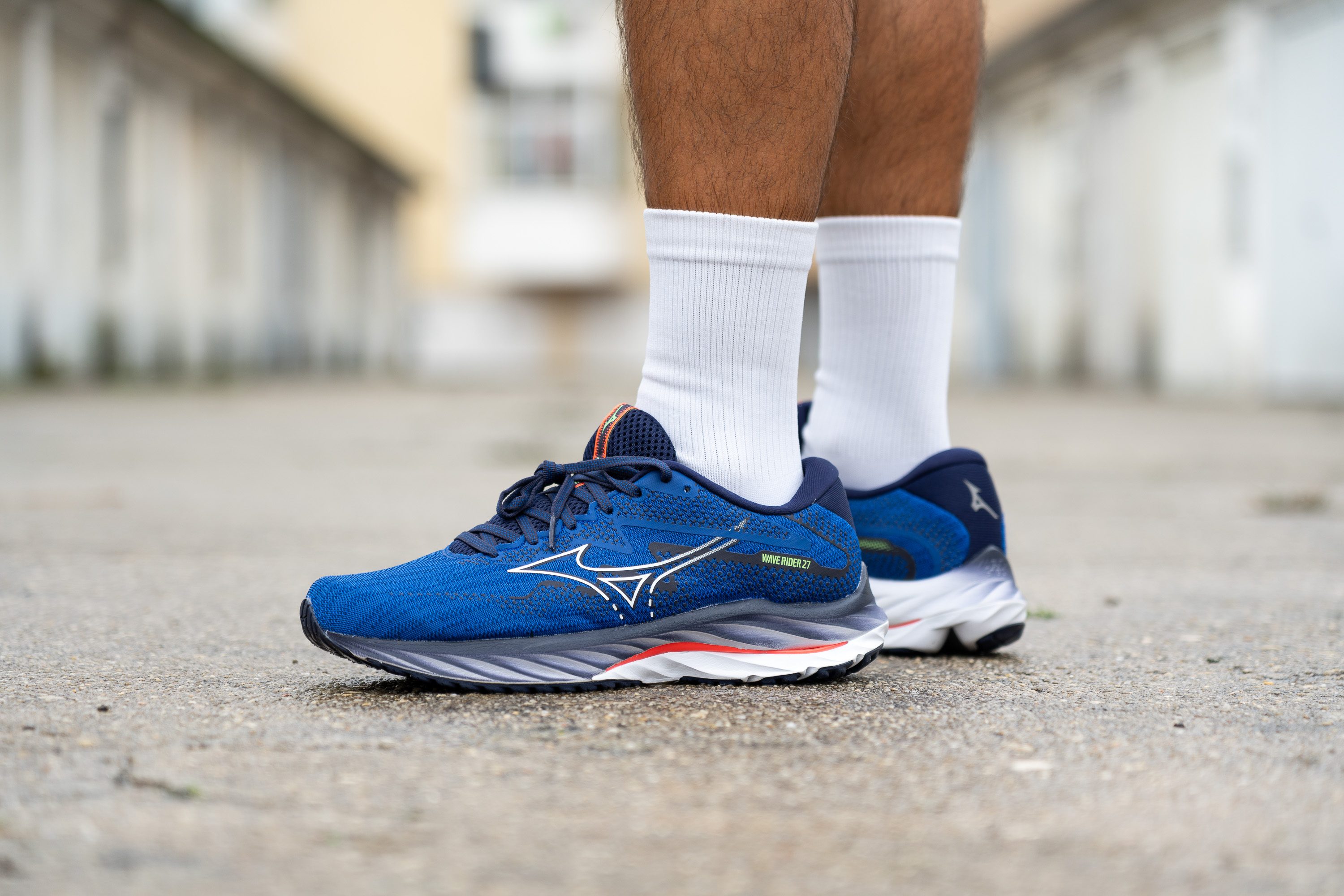
Who should NOT buy
Most runners will be quite pleased with the Mizuno Wave Rider 27, but we think it's not for everyone. With a 13.2-mm drop, this shoe isn't the best fit for forefoot strikers. In our view, better-suited options like the Hoka Clifton 9 or the Adidas Adizero SL are available, offering a lower drop and more comfortable ride for forefoot strikers.
If you're planning to do a lot of speedwork, the Mizuno Wave Rider 27 might not be the shoe for you. Other shoes like the Mizuno Wave Rebellion or the Hoka Mach X, as we discovered, offer better performance for those speedy workouts, providing the necessary agility and responsiveness.
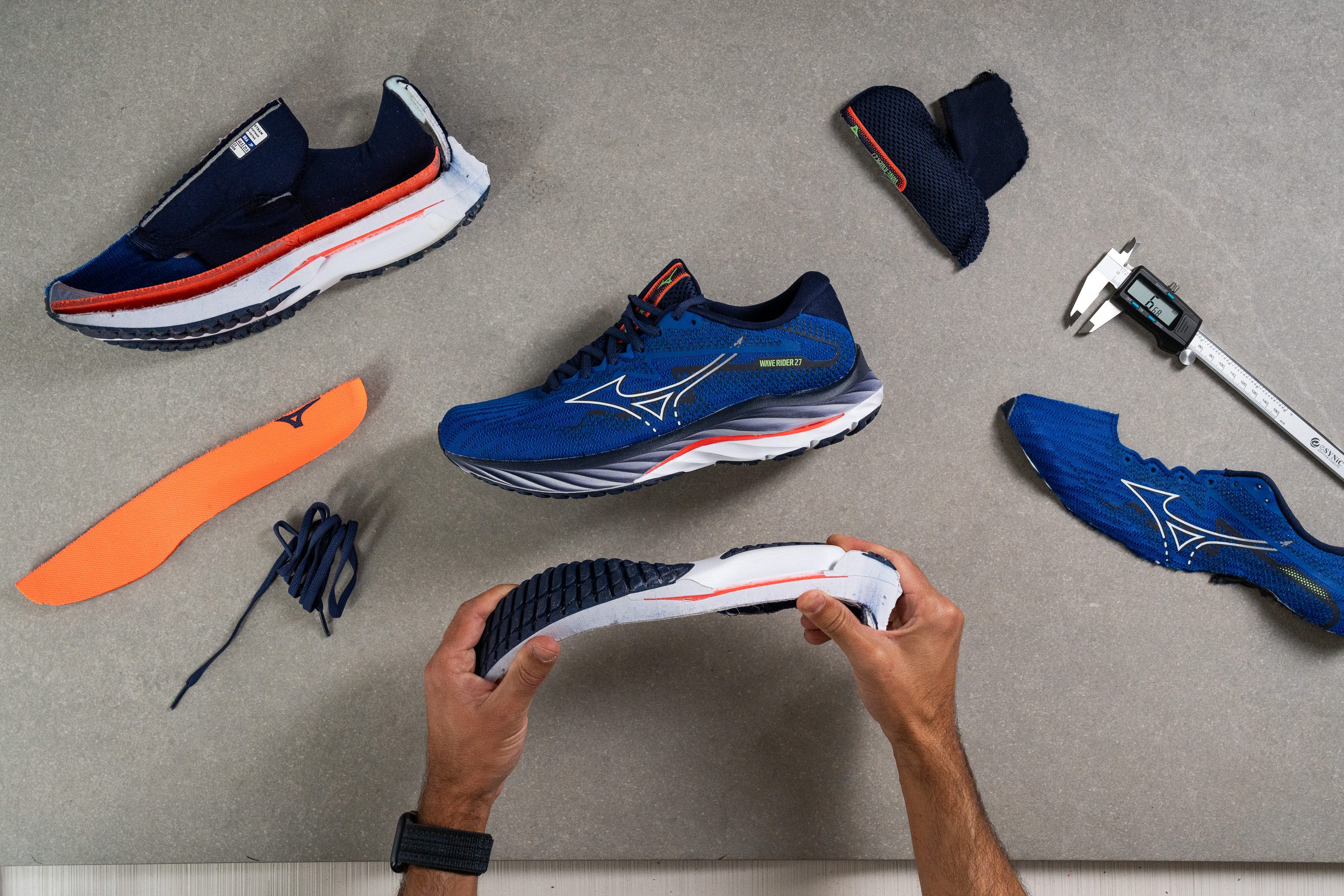
Cushioning
Shock absorption
The Wave Rider 27 is a solid daily trainer for runners who want decent cushioning without a pillow-like feel. It provides average impact protection with 131 SA in the heel and 103 SA in the forefoot.
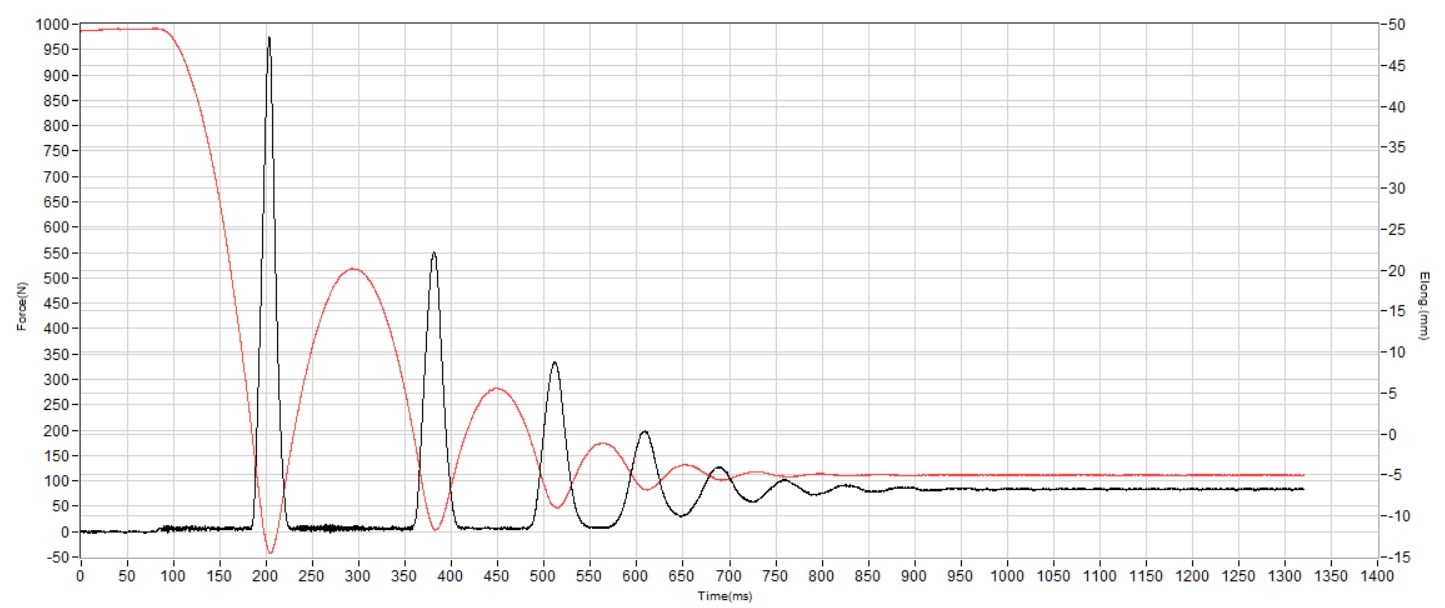
| Wave Rider 27 | 131 SA |
| Average | 129 SA |
Energy return
The ride isn’t energetic, and we felt it quite flat during our runs. Back in the lab, our energy return machine confirmed it with just 49.9%. That result doesn’t match the shoe’s price point and clearly needs improvement.
| Wave Rider 27 | 49.9% |
| Average | 58.5% |
Heel stack
It looks like Mizuno is sticking with what works for them—they've used the same successful formula as in the previous Wave Riders. This time, we measured the heel height at 38.3 mm, which is only 1 millimetre higher than last year's model (37.3 mm).
This is plenty of heel cushioning for any runner, including heel strikers who weigh a bit more.
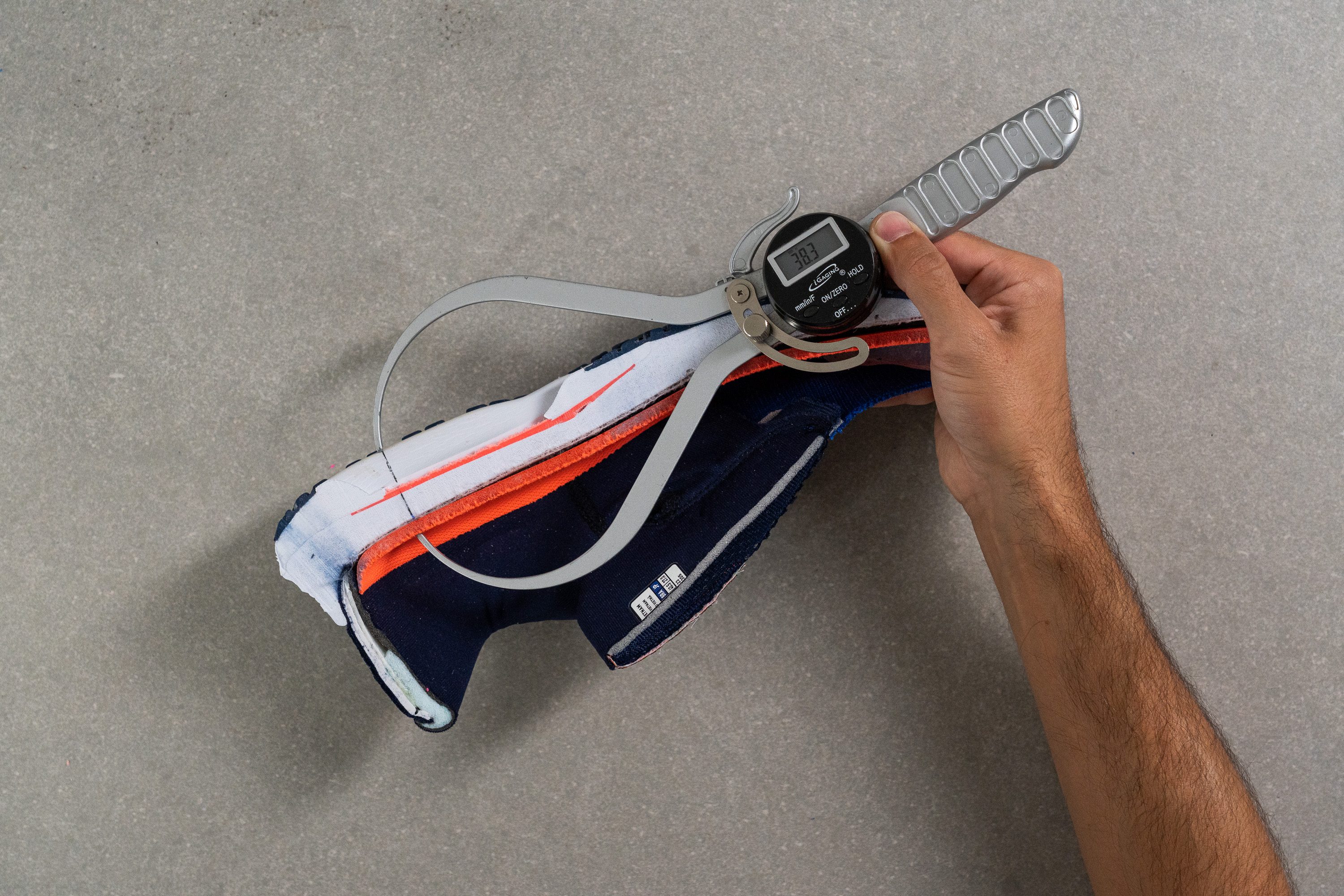
| Wave Rider 27 | 38.3 mm |
| Average | 34.8 mm |
Forefoot stack
In our measurements, the forefoot stack height came in at a fairly typical 25.1 mm. However, it's clear that Mizuno took a different approach with the forefoot compared to the heel.

| Wave Rider 27 | 25.1 mm |
| Average | 26.2 mm |
Drop
Combining a high heel with an average forefoot naturally results in a steep heel-to-toe drop. This is precisely what we expected from a proper Wave Rider.
In our lab, we measured a 13.2-mm heel-to-toe drop. So, if you're lacing up these, get ready for a pretty steep experience. This makes the WR27 a top pick for extreme heel strikers!
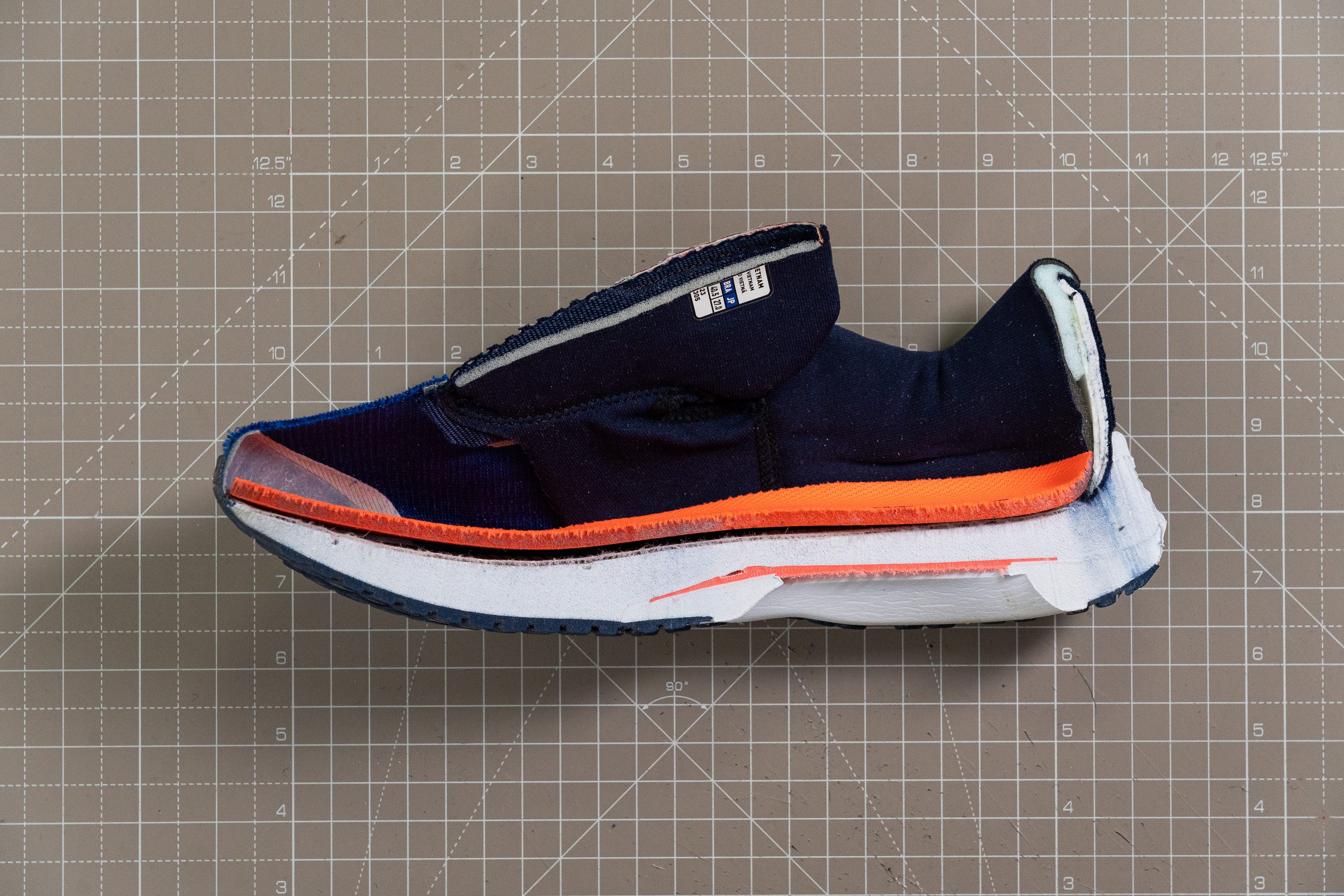
| Wave Rider 27 | 13.2 mm |
| Average | 8.6 mm |
Midsole softness
The midsole is mostly crafted from Enerzy, which is a TPE foam that competes well with some top-notch compounds out there like React or Fresh Foam X. We measured its softness in our lab and found it to be 23.3 HA. So, don't expect it to feel like a cloud, but it won't feel like a rock either.
There's also a standout feature inside the midsole—the Wave Plate. It's made of Pebax has been in the shoe ever since it first came out 27 years ago to give extra stability and smooth transitions from heel to toe.
But it's worth noting that the plate doesn't run the full length of the shoe—it stops in the midfoot area. This shows once again that this shoe is really designed for heel strikers.
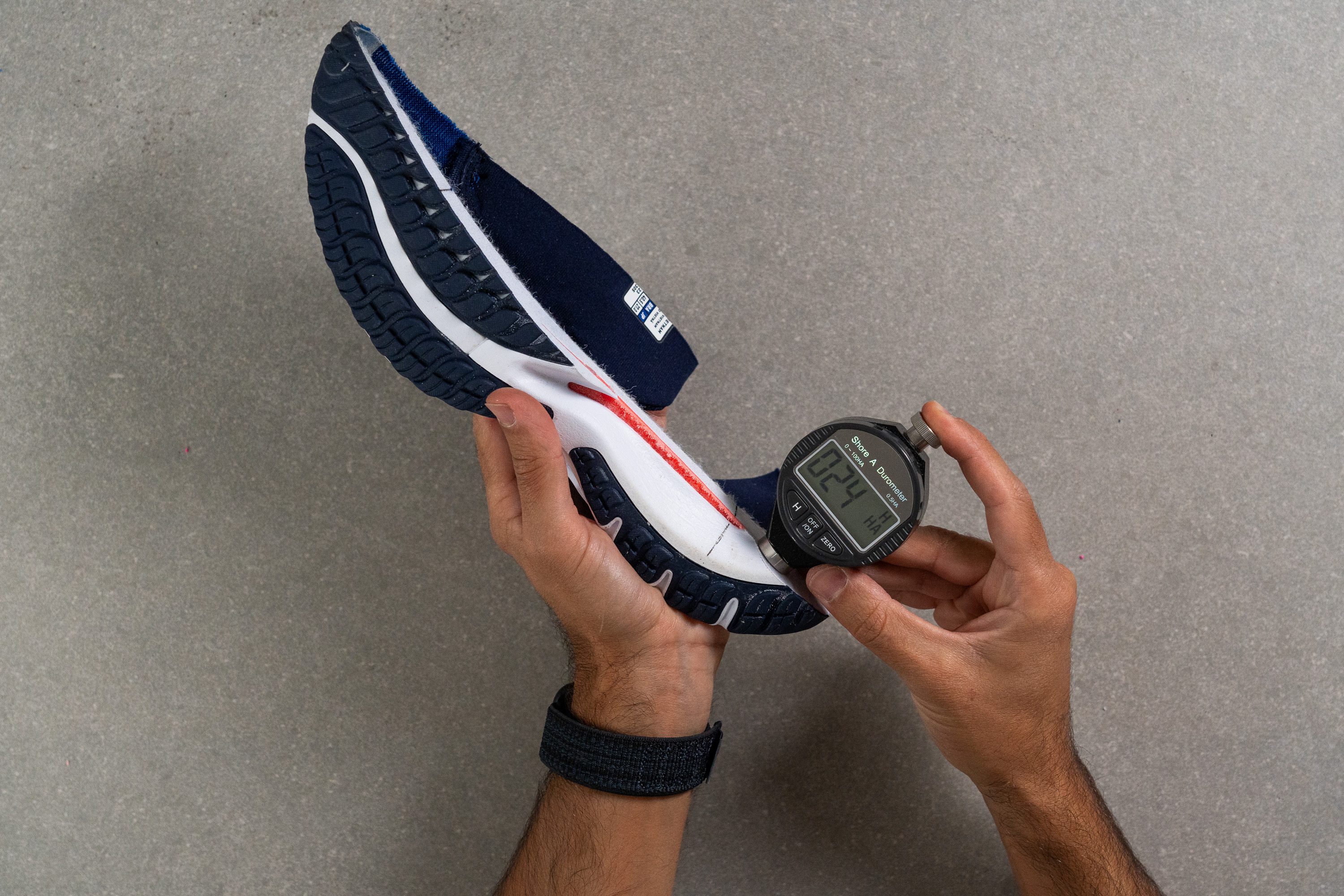
| Wave Rider 27 | 23.3 HA |
| Average | 20.4 HA |
Size and fit
Size
Mizuno Wave Rider 27 fits true to size (53 votes).
Width / Fit
Next up, we measured the toebox, focusing first on the widest part of the upper. We found that, just like with the midsole, Mizuno chose a middle-of-the-road approach.
We measured it to be 99.2 mm, which should comfortably fit most feet. And for those needing a little extra room, Mizuno also offers this shoe in a wide size.
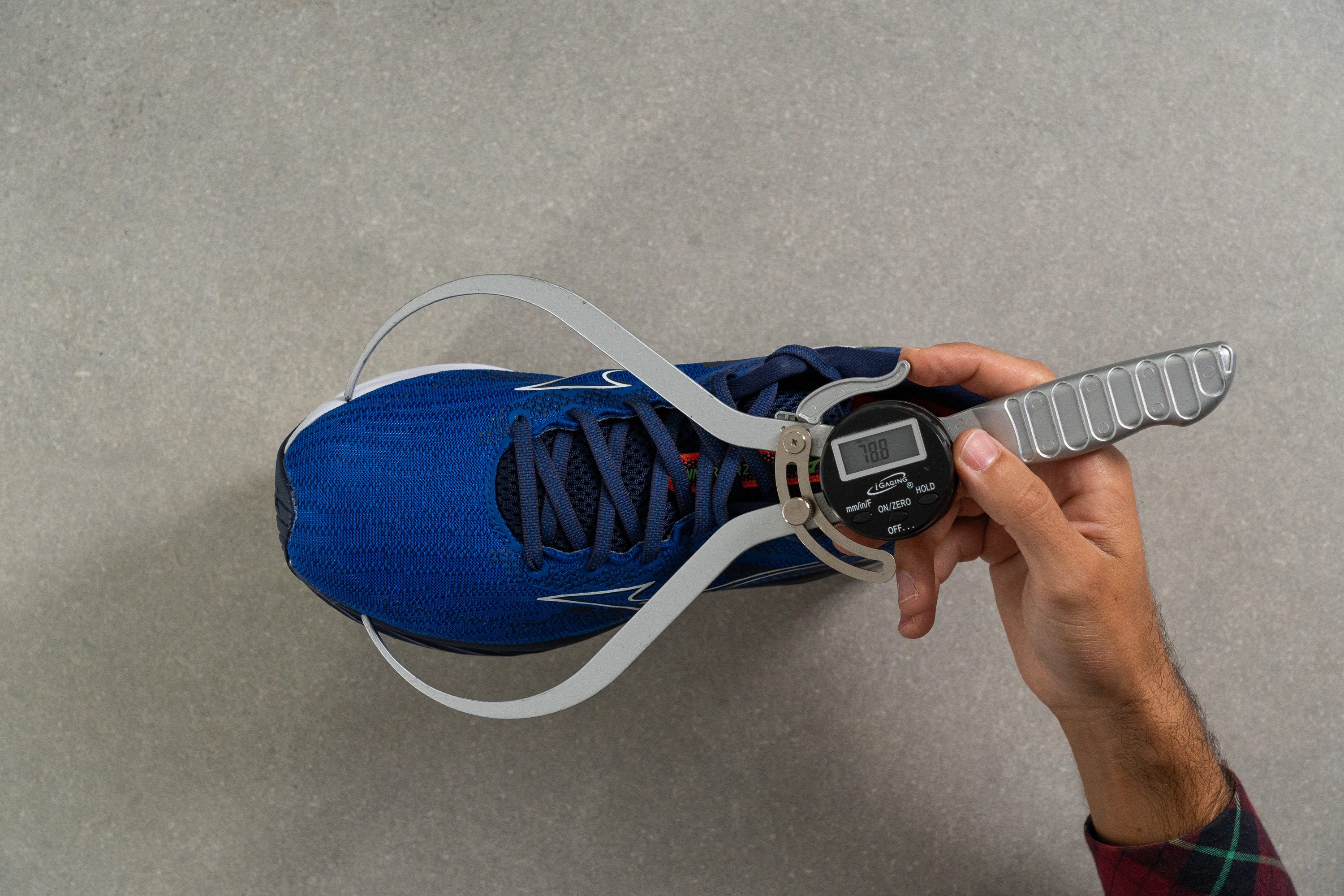
This test follows an older methodology, which is why you don't see recently tested shoes in the chart. Results from different methodologies can not be compared.
| Wave Rider 27 | 99.2 mm |
| Average | 98.5 mm |
Toebox width
We also examined the toebox right at the big toe to get a more detailed comparison with other shoes. We discovered that the measurement stood at 78.8 mm, reinforcing the same idea about its design and fit.
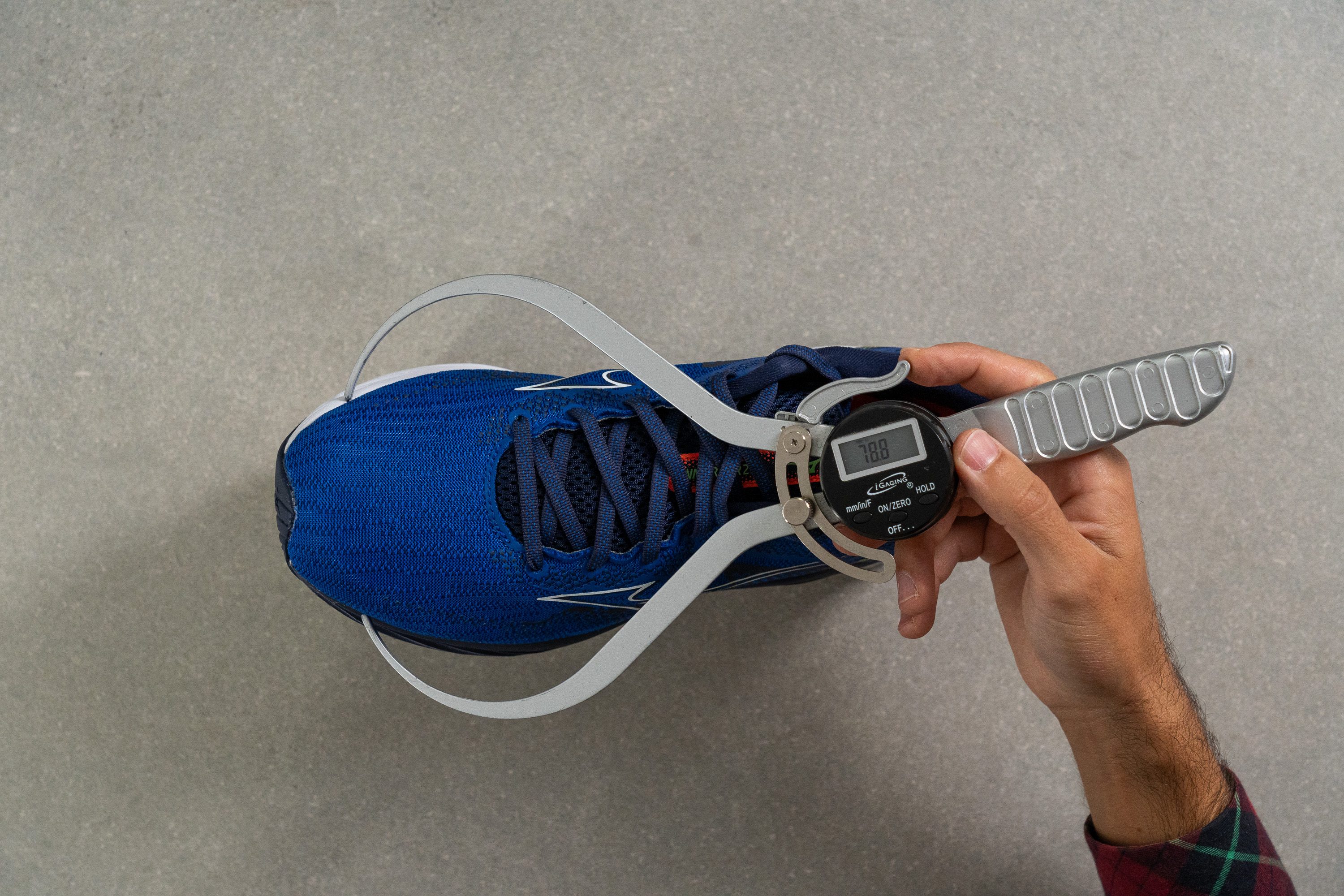
This test follows an older methodology, which is why you don't see recently tested shoes in the chart. Results from different methodologies can not be compared.
| Wave Rider 27 | 78.8 mm |
| Average | 78.4 mm |
Traction / Grip
Traction test
The forefoot traction of the Wave Rider 27 didn’t impress us during testing. With a 0.34 score, it just clears the bar. We found it holds up well on dry pavement but feels borderline acceptable on wet roads. Mizuno has clear room for improvement here.
| Wave Rider 27 | 0.34 |
| Average | 0.48 |
Outsole design
The rubber fully covers all the high-wear areas of the shoe, while some foam is exposed to reduce weight. Additionally, there's an eye-catching cutout that highlights the Pebax-based Wave Plate.
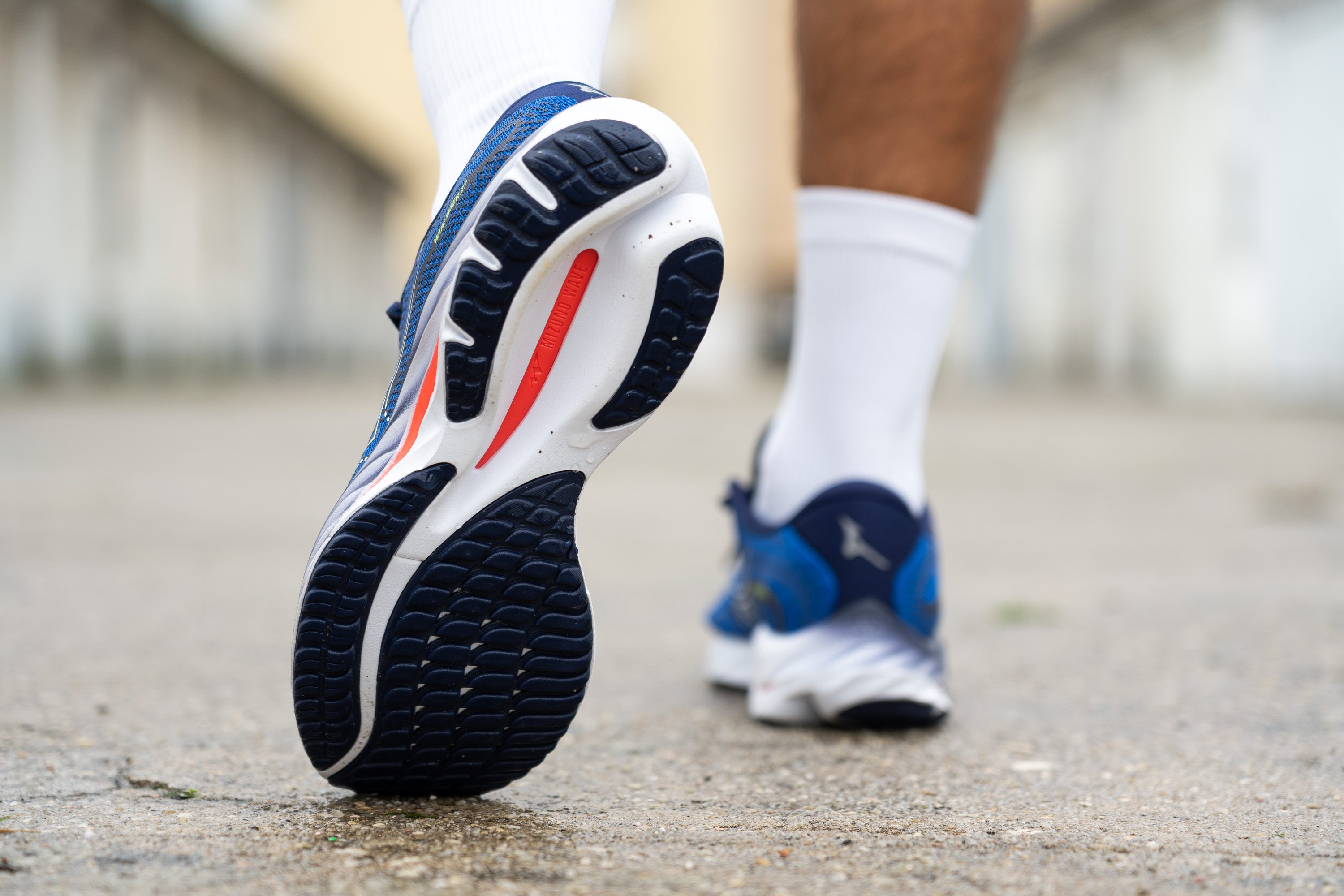
Flexibility / Stiffness
We found that the Wave Rider 27 required 13.6N to reach 30 degrees in our flex test. This result falls in line with most daily trainers, making it a suitable option not just for running but also for walking and gym sessions.
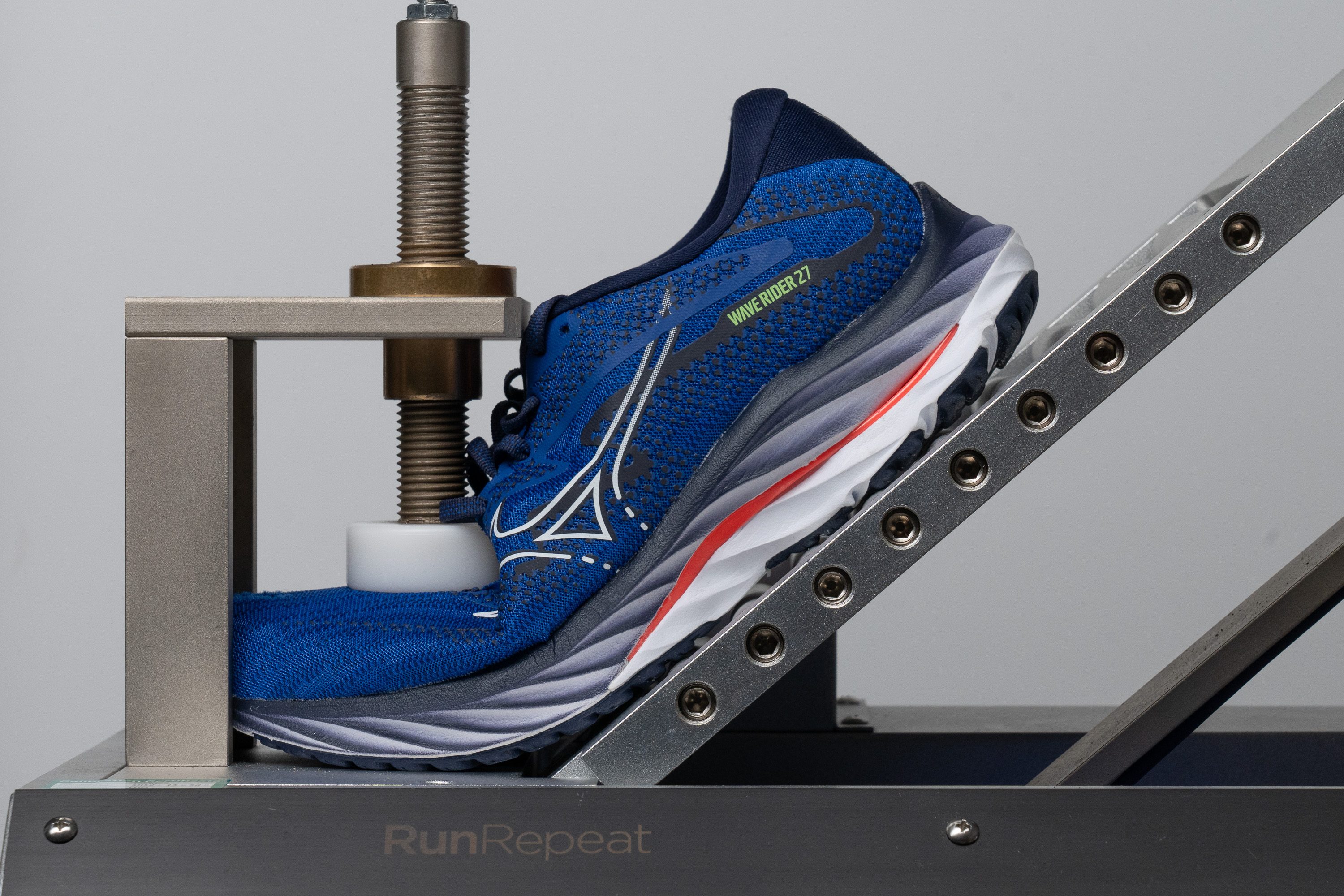
| Wave Rider 27 | 13.6N |
| Average | 15.3N |
Stiffness in cold (%)
After putting the shoe back in the freezer for another 20 minutes, we conducted the stiffness test again. We observed that the result was slightly higher, but still impressively low.
The difference between the two tests is 39.1%, which is below the average. This highlights the great performance of Mizuno's Enerzy foam once again.
| Wave Rider 27 | 39% |
| Average | 33% |
Weight
Although this shoe weighs in at just under the 10-oz mark at 9.8 oz, it's worth noting that daily trainers are getting lighter every year. This puts the Wave Rider 27 on the heavier end of the spectrum, despite being 0.5 oz lighter than the WR26.
If you're looking for a lighter shoe and are willing to sacrifice some durability, consider the ASICS Novablast 3 instead.
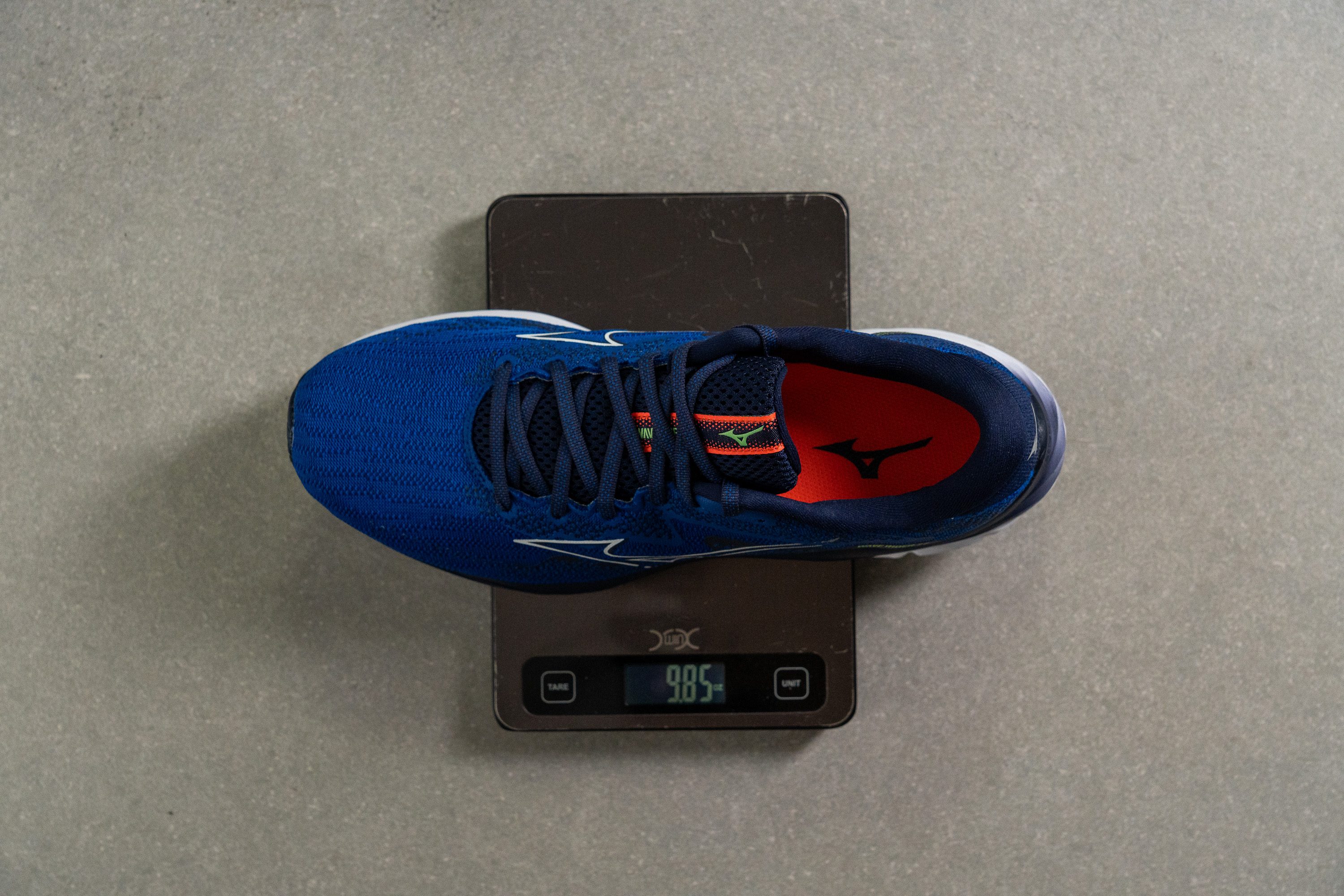
| Wave Rider 27 | 9.8 oz (279g) |
| Average | 9.3 oz (264g) |
Breathability
When we first laid eyes on the jacquard mesh upper, it looked breathable to us. After running it through our lab's smoke test, it scored 4 out of 5—which is good, but not top-notch.
Mizuno decided to go with a thin mesh for the upper, but they skipped adding any ventilation holes. You can see this in the video below thanks to our powerful light.
That means air has to work its way through the entire mesh to get out, causing hot air and moisture to escape at a slower, steady pace.
To get a better view on this, we looked closely under the microscope.

What we discovered confirmed our suspicions: there really are no ventilation holes, and the jacquard mesh doesn't help airflow that much.

On the inside of the upper, we found no extra fabric for added comfort or protection. A good call, since that would've messed up the airflow even more.
| Wave Rider 27 | 4 |
| Average | 3.7 |
Stability
Lateral stability test
The Wave Rider series has always been a reliable daily trainer without any special stability features like TPU overlays or medial posts.
However, we discovered that the Wave Plate makes a huge difference, and this is why we consider it one of the most stable daily trainers out there.
Torsional rigidity
Thanks to the plate, it avoids becoming overly stiff, unlike shoes with carbon plates. We gave it a 3 out of 5 in our twist test, which is pretty much the standard score for most daily running shoes.
| Wave Rider 27 | 3 |
| Average | 3.5 |
Heel counter stiffness
The heel counter is impressively rigid, earning a top score of 5 out of 5 from us.
While this feature contributes to the shoe's excellent stability, it might not be the best choice for people with sensitive heels.
| Wave Rider 27 | 5 |
| Average | 2.9 |
Midsole width - forefoot
In the forefoot area, we measured a 113.9-mm platform. This size seems aimed at accommodating as many runners as possible.
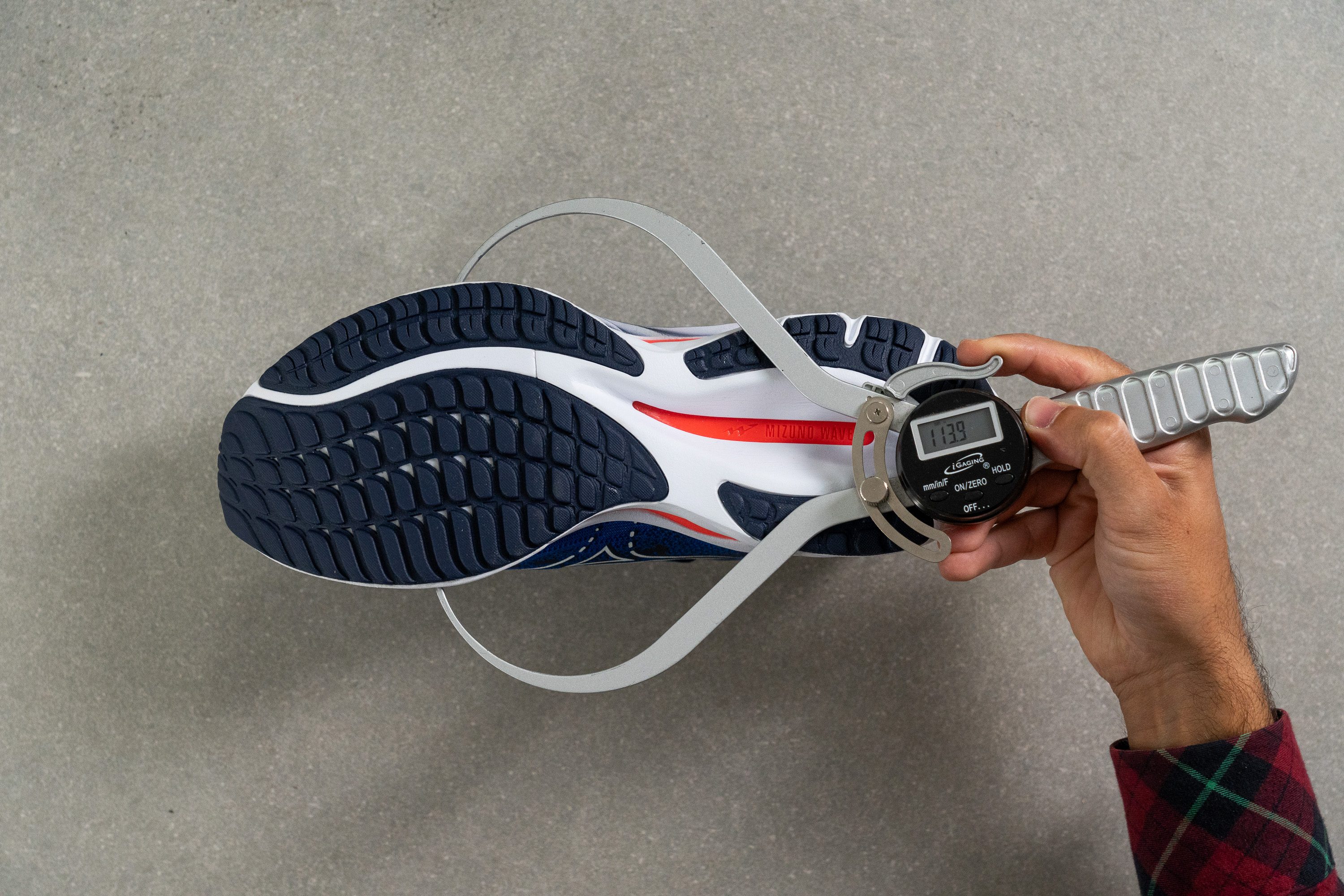
| Wave Rider 27 | 113.9 mm |
| Average | 114.4 mm |
Midsole width - heel
The heel design follows the same idea. We measured it at 90.9 mm, which is pretty much the average.
We believe this width is just right for a shoe that aims to be versatile. If it were too narrow, that could make the shoe unstable. On the flip side, going too wide could result in a ride that feels dull and heavy.

| Wave Rider 27 | 90.9 mm |
| Average | 90.7 mm |
Durability
Toebox durability
So, you're wondering if the lack of ventilation holes in the Wave Rider 27's upper makes it more durable, right?
In our dremel test, we found that it does help—but only to an extent. The shoe scored a 2 out of 5 for durability, which isn't bad... but also not amazing.

| Wave Rider 27 | 2 |
| Average | 2.6 |
Heel padding durability
The WR27's heel padding also underwent our standard Dremel testing.
The outcome was quite impressive. Unlike many other shoes we've evaluated, the WR27 achieved a perfect score of 5/5, placing it in an elite category.
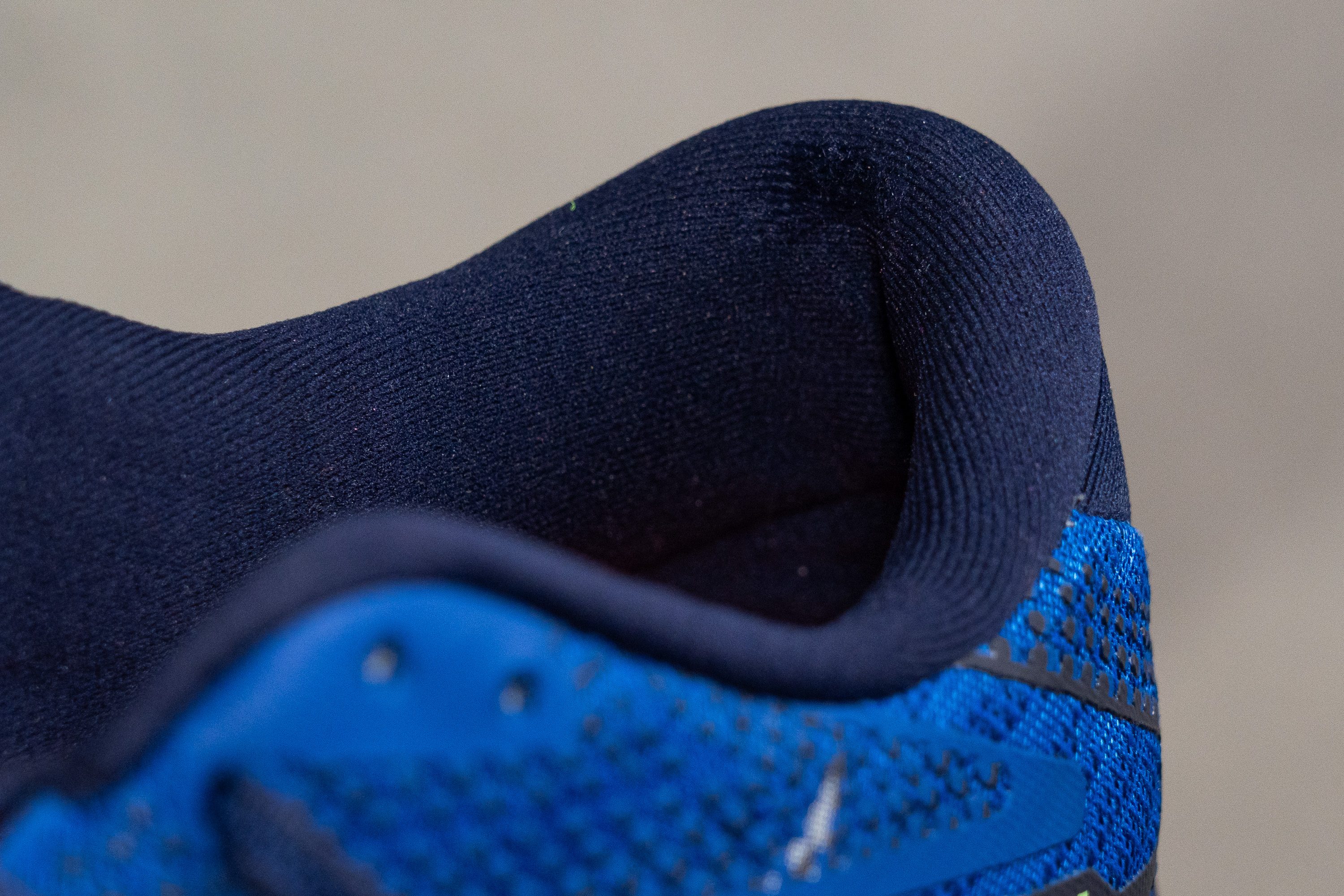
| Wave Rider 27 | 5 |
| Average | 3.4 |
Outsole hardness
We flipped the shoe over to examine its outsole, a crucial part of any daily training shoe. Will it hold up to our expectations?

In our lab, the first test involved measuring the hardness of the rubber that Mizuno uses. We found that it scored an 83.0 HC, which is a bit higher than average. This suggests it should offer good durability. Next, we'll put that to the test.

| Wave Rider 27 | 83.0 HC |
| Average | 79.2 HC |
Outsole durability
We're thrilled with the results of our final Dremel test on the Wave Rider 27's outsole.
A mere 0.6 mm indentation remained after our examination in the lab, beating out most of the competition. We're confident this outsole will easily last for over 500 miles for most runners.
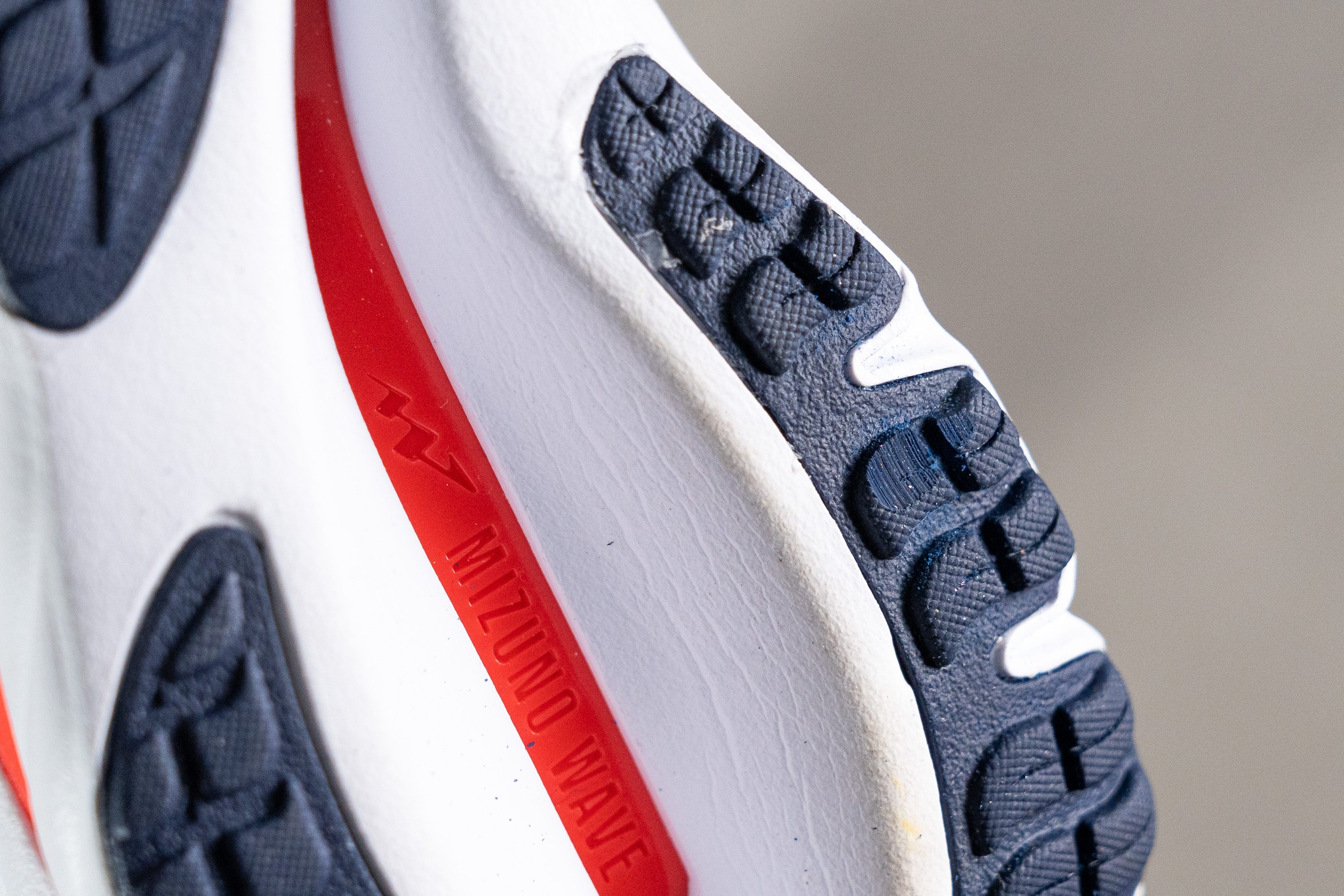
| Wave Rider 27 | 0.6 mm |
| Average | 1.1 mm |
Outsole thickness
We measured the rubber on the outsole and found it to be thicker than average at 3.8 mm. This extra thickness adds another boost to the shoe's durability.
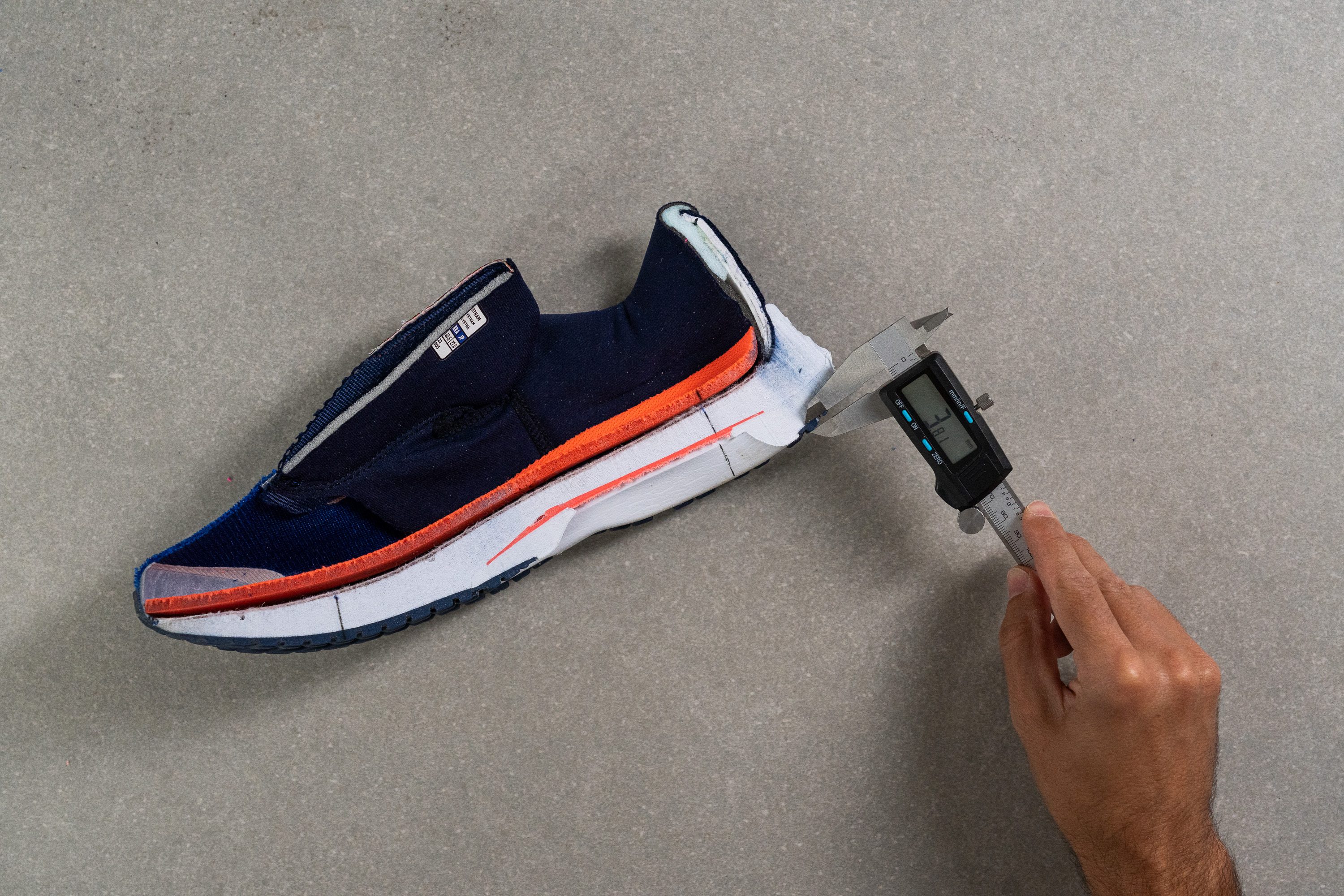
| Wave Rider 27 | 3.8 mm |
| Average | 3.2 mm |
Misc
Insole thickness
Mizuno played it safe with the insole, choosing an average one. We measured it at 4.7 mm. There's really nothing special about it!
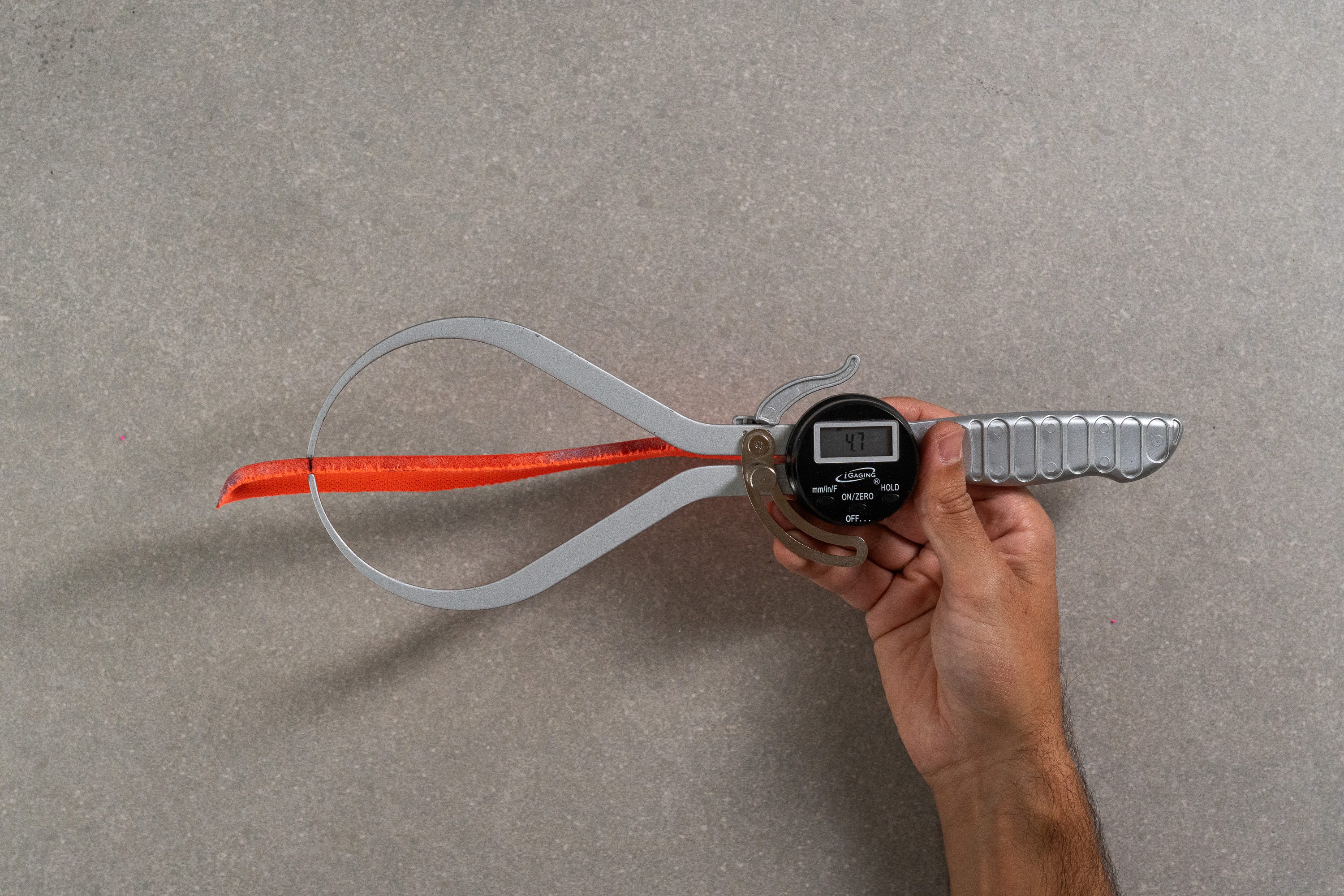
| Wave Rider 27 | 4.7 mm |
| Average | 4.5 mm |
Removable insole
The insole is removable, allowing us to use custom orthotics or even a preferred insole from another pair of shoes.
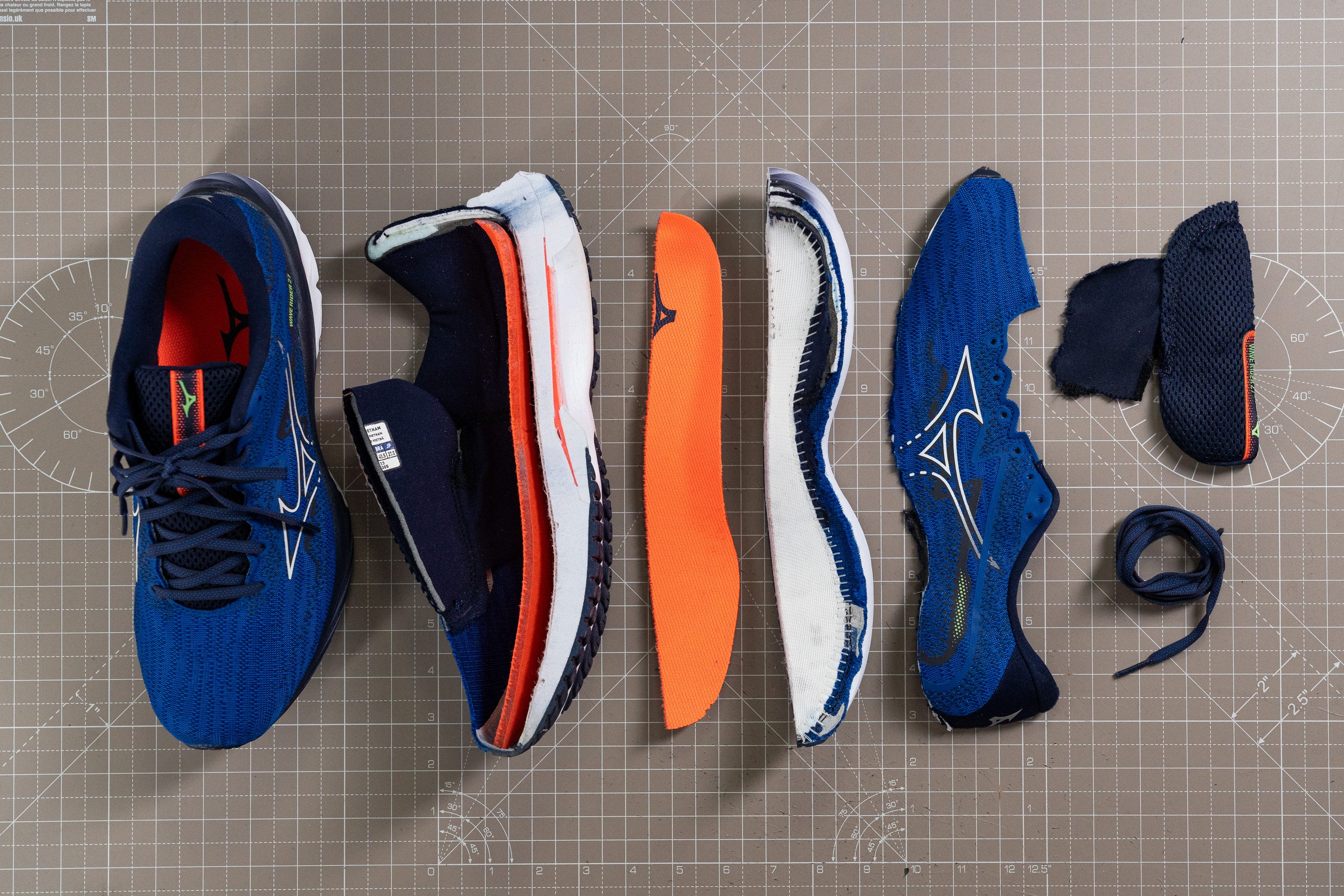
| Wave Rider 27 | Yes |
Midsole softness in cold (%)
As a daily trainer, it should be ready throughout the year, so it needs to hold up in cold weather. So we did a little experiment—we put the Wave Rider 27 in the freezer for 20 minutes and then tested it again.
The results were really impressive. We got a 26.3 HA reading, which is nearly the same as before!
That's only a 12.9% difference, and it's all thanks to its TPE-based foam. It's more than ready to tackle cold weather!
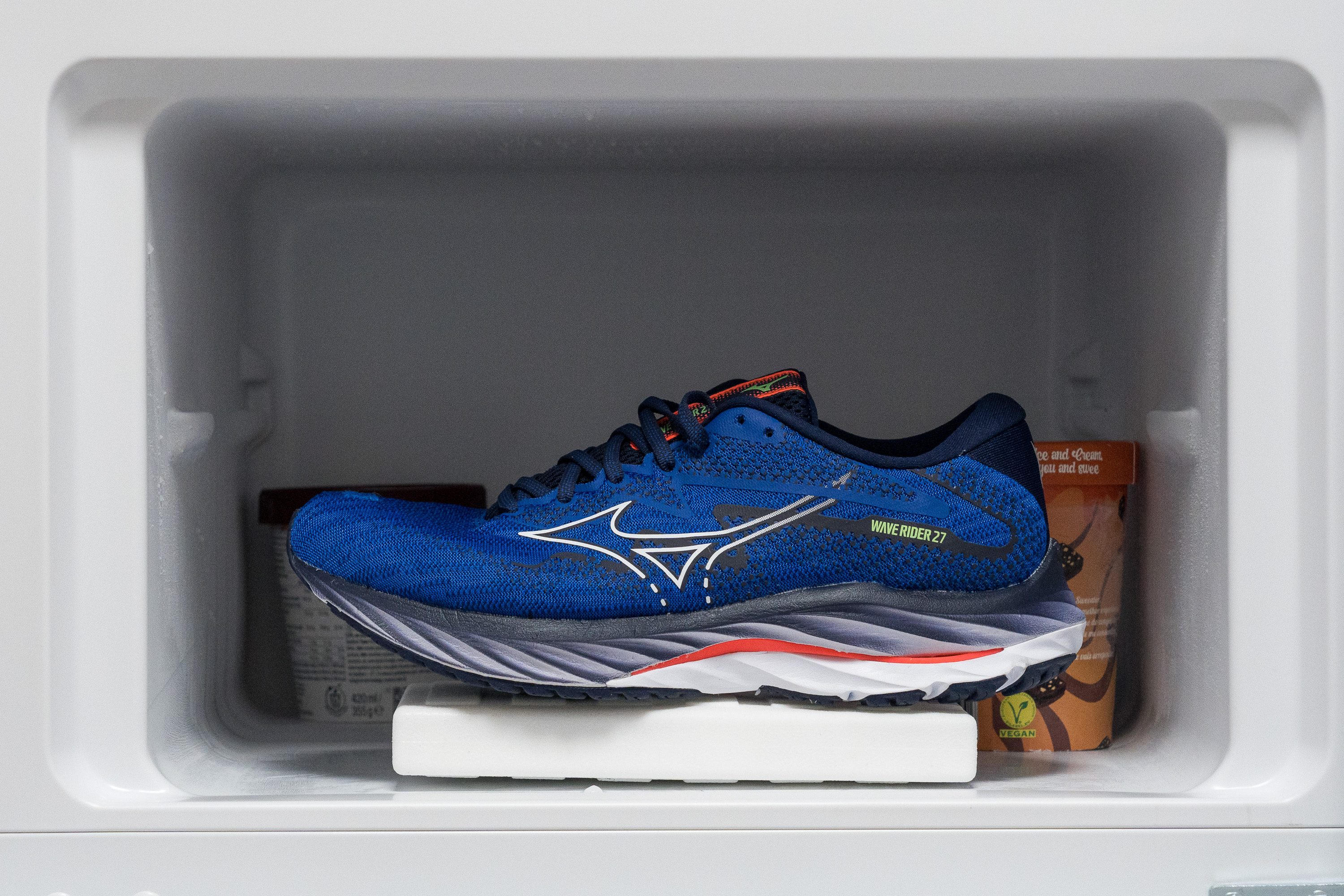
| Wave Rider 27 | 13% |
| Average | 24% |
Reflective elements
In the Wave Rider 27, when it's dark out, the thing lighting up is actually the Mizuno logo! So they're giving us a useful feature and showing off their brand at the same time. Pretty smart!
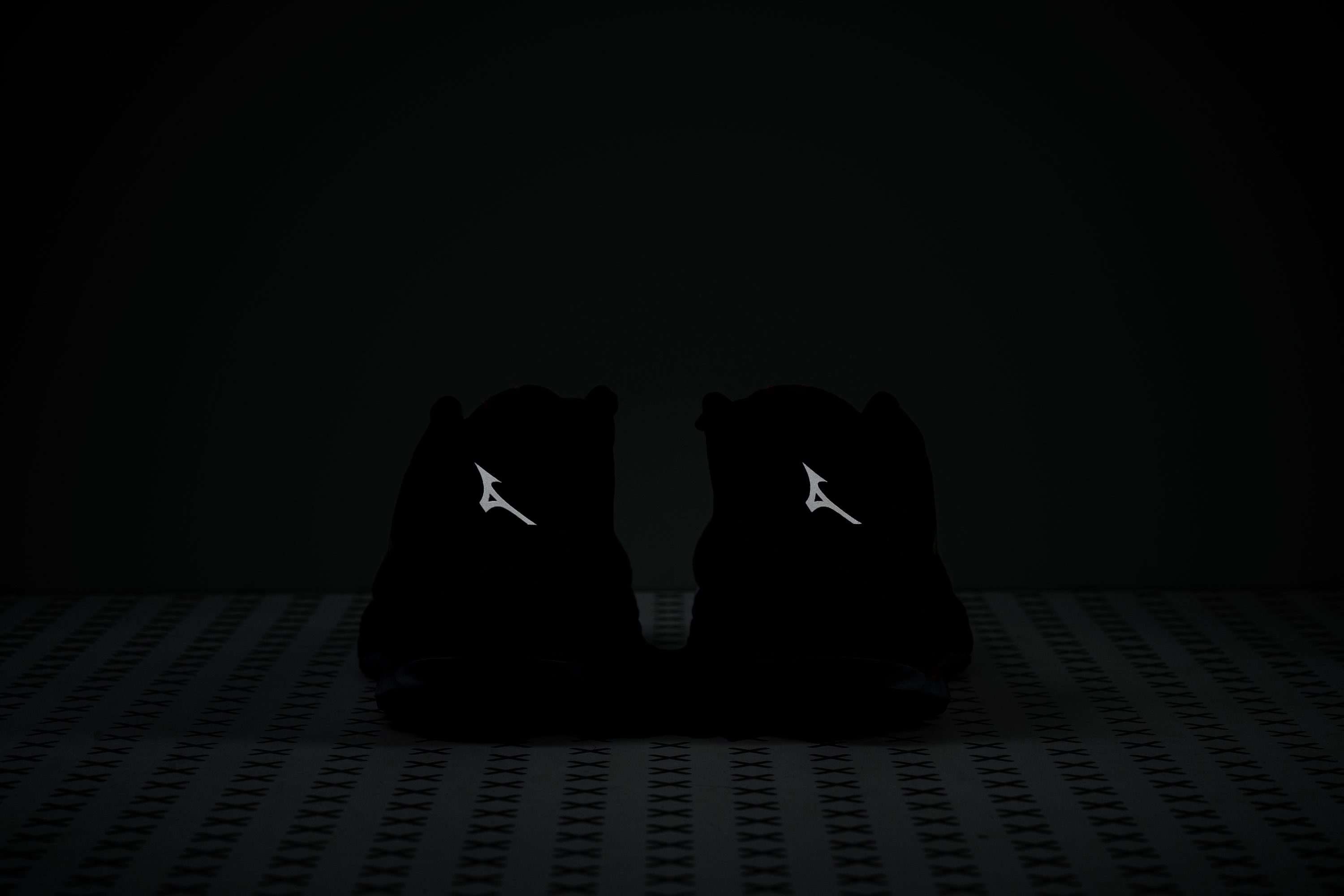
| Wave Rider 27 | Yes |
Tongue padding
At just 6.4 mm, the tongue is really well-designed, hitting the sweet spot between lightweight feel and plush comfort.

We didn't experience any annoying lace bite or similar issues, no matter how tight we pulled those laces.

| Wave Rider 27 | 6.4 mm |
| Average | 5.8 mm |
Tongue: gusset type
We noticed that Japanese brands are big fans of gusseted tongues, and Mizuno fits right in with that trend.
This semi-gusseted tongue prevents any undesired movements while running at a fast pace. It's a small but significant detail that makes a big difference on the run, and something we appreciate in a £140 shoe.
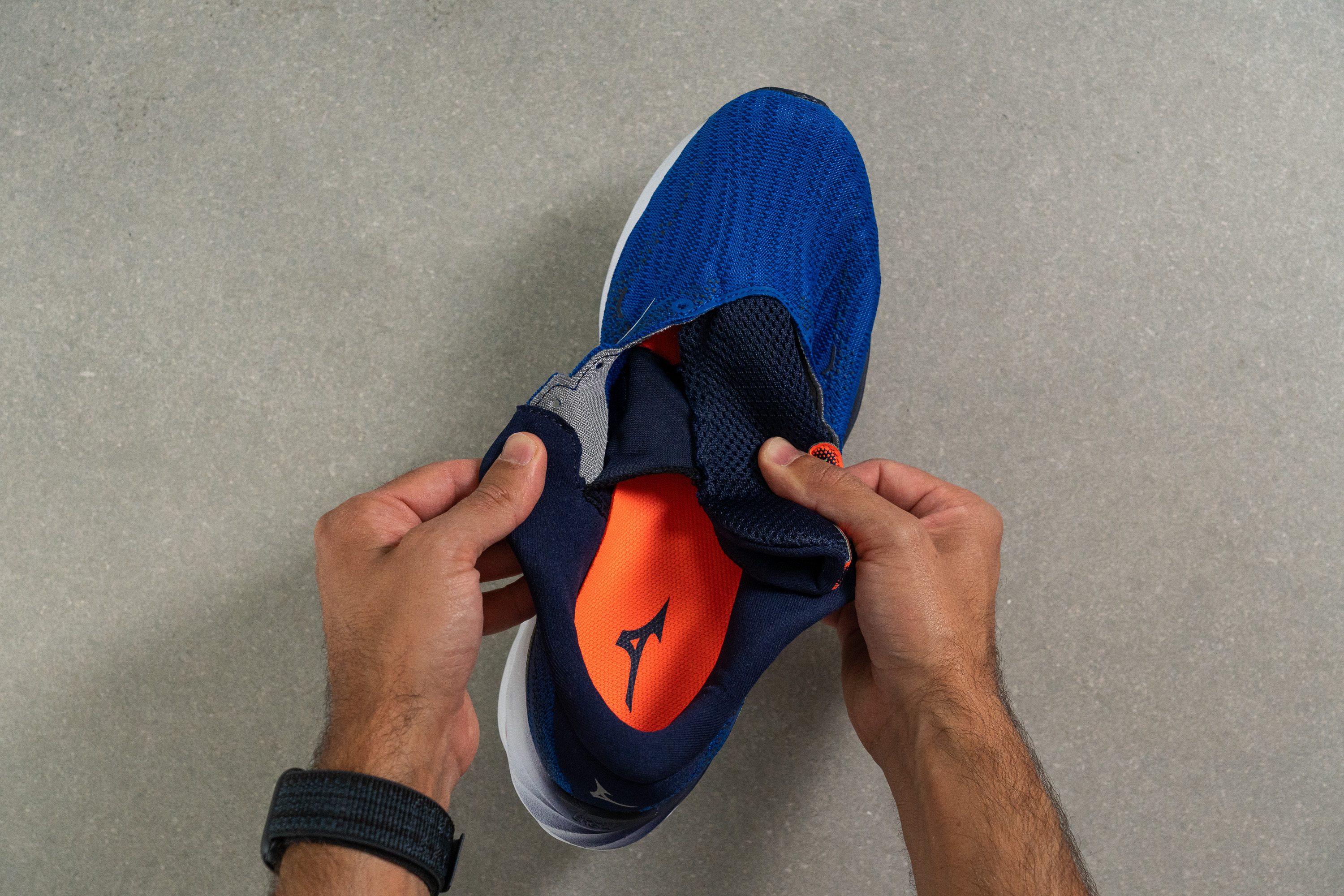
| Wave Rider 27 | Both sides (semi) |
Heel tab
The Wave Rider 27 doesn't have a heel tab, but for us, it's no big deal. Slipping our feet into these daily trainers is hassle-free.

| Wave Rider 27 | None |

